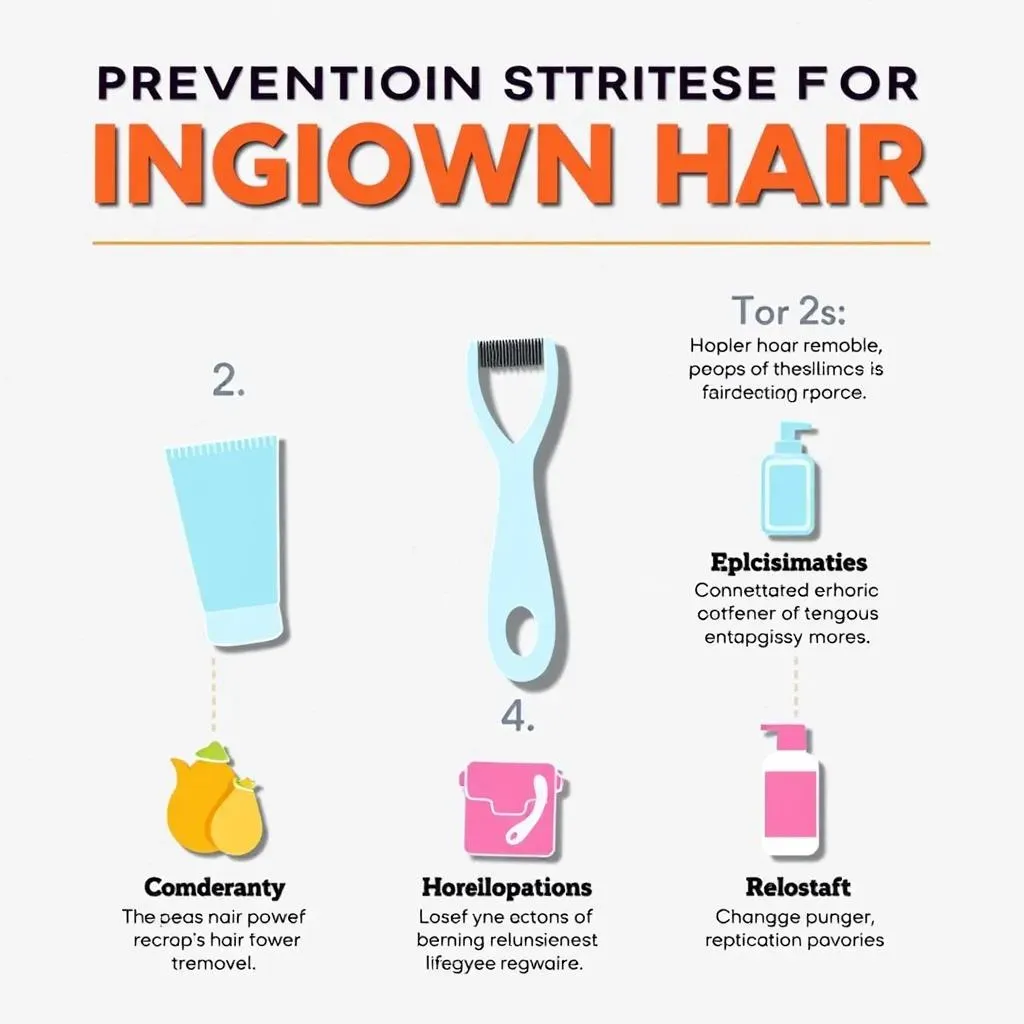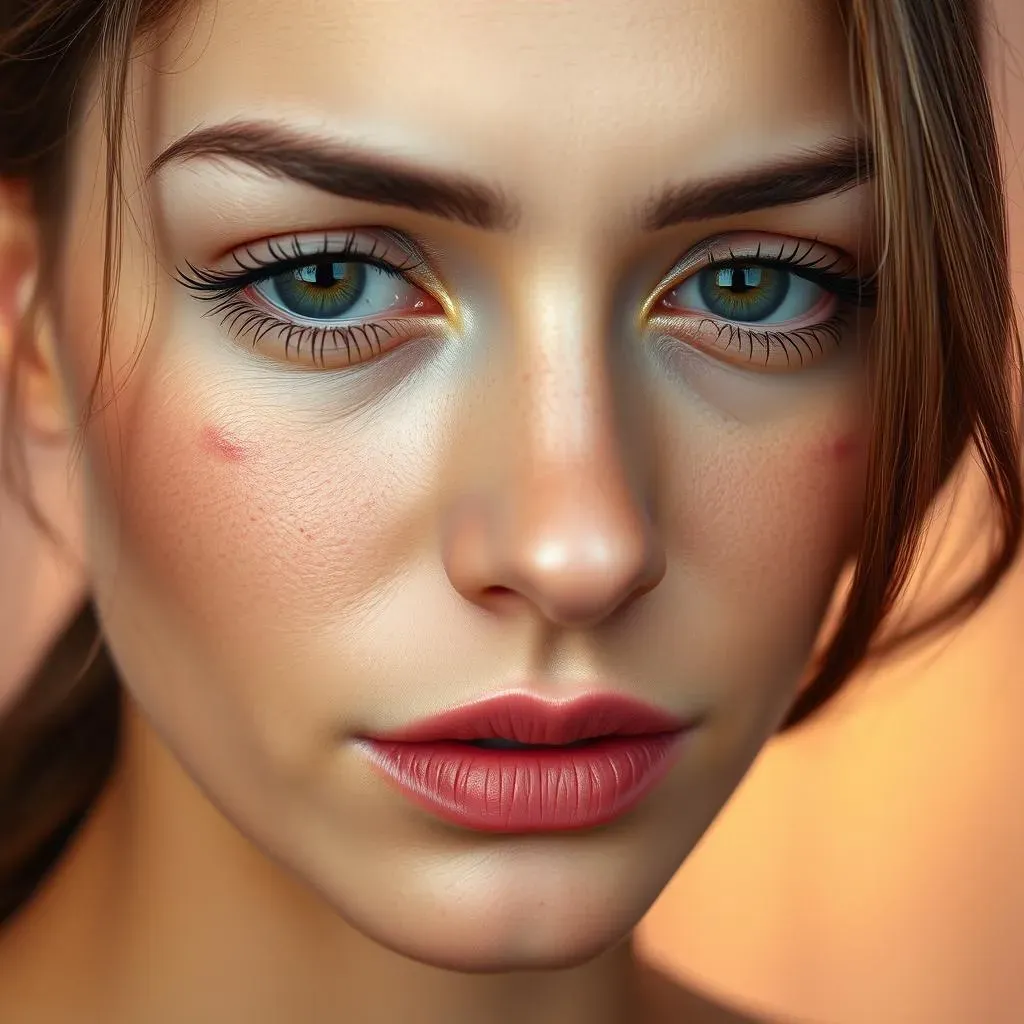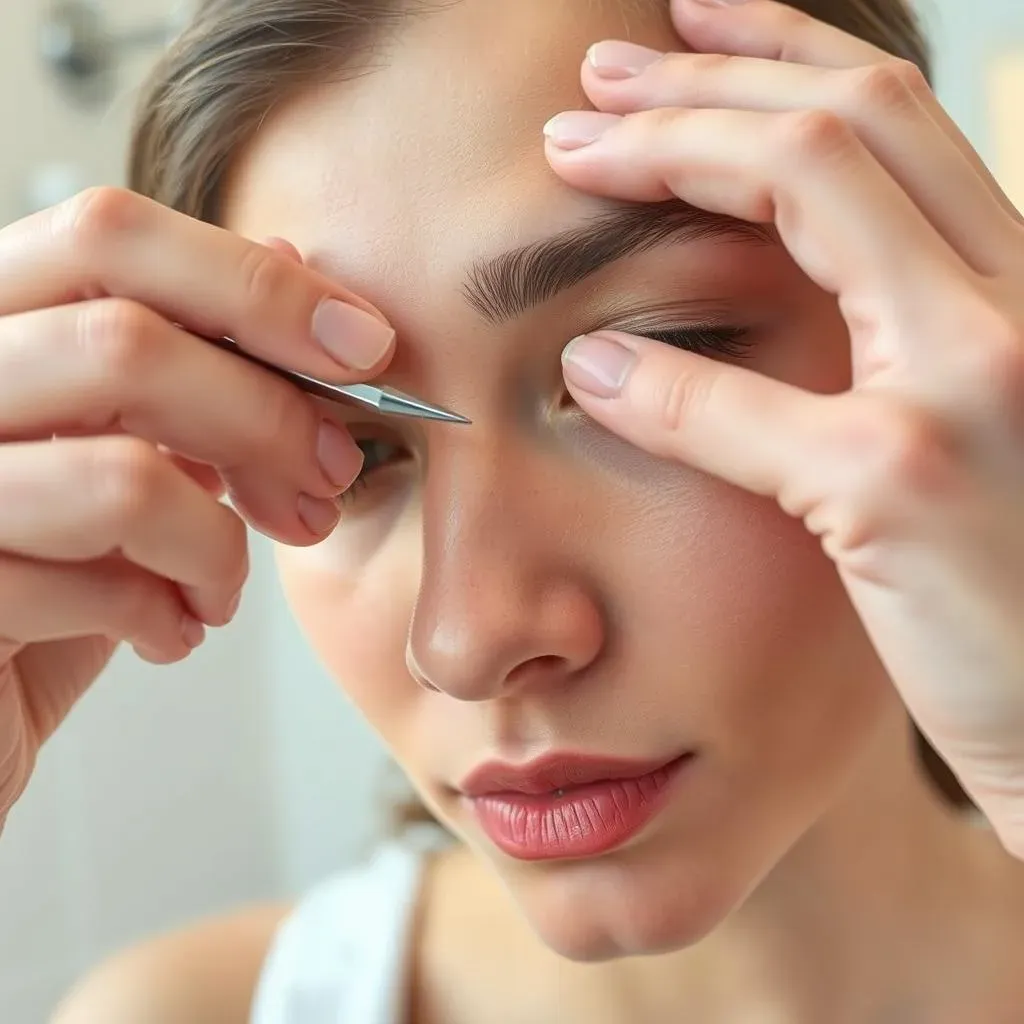Table of Contents
Ingrown hairs can be a frustrating and painful problem, especially when they appear on the face. If you're struggling with ingrown hairs and looking for ways to remove them, you're not alone. Ingrown hairs occur when a hair grows back into the skin, leading to inflammation, redness, and discomfort. They can be caused by shaving, waxing, or tweezing, and are more common in individuals with curly or coarse hair. Removing ingrown hair from the face requires a gentle yet effective approach to avoid further irritation and potential infection. In this article, we'll explore the symptoms and causes of ingrown hairs, discuss various treatment options, and provide prevention strategies to help you achieve a smoother, healthier complexion. Whether you're dealing with a single ingrown hair or recurrent ingrown hairs, our guide will walk you through the best ways to remove ingrown hair from your face and prevent future occurrences.
Understanding Ingrown Hair: Symptoms and Causes

Understanding Ingrown Hair: Symptoms and Causes
What are Ingrown Hairs?
Ingrown hairs occur when a hair grows back into the skin, rather than outward. This can happen anywhere on the body, but is particularly common on the face, especially after shaving, waxing, or tweezing. Ingrown hairs can appear as small, raised bumps or pus-filled pimples, and may be accompanied by redness, swelling, and itching.
Anyone can develop ingrown hairs, but they are more common in individuals with curly or coarse hair. This is because such hair is more likely to bend and curve back into the skin, especially after shaving. Ingrown hairs can also be caused by tight clothing, which may cause friction and push hairs back into the skin.
Symptoms of Ingrown Hair
- Small, raised bumps or pimples on the skin
- Redness and swelling around the affected area
- Itching or burning sensation
- Pus or discharge from the bump
- Dark spots or hyperpigmentation after the ingrown hair has healed
Ingrown hairs can be painful and unsightly, and if left untreated, may lead to infection or scarring. It's essential to recognize the symptoms early on to take appropriate action and prevent complications.
Causes and Risk Factors
Ingrown hairs are often caused by improper hair removal techniques, such as shaving too closely or pulling the skin taut during waxing. Other risk factors include:
Cause | Description |
|---|---|
Curly or coarse hair | Hair that is curly or coarse is more likely to bend back into the skin, causing ingrown hairs. |
Tight clothing | Clothing that is too tight can rub against the skin, causing friction and pushing hairs back into the skin. |
Poor shaving techniques | Shaving too closely, shaving against the grain, or using a dull razor can all contribute to ingrown hairs. |
By understanding the causes and risk factors, you can take steps to prevent ingrown hairs and reduce their occurrence.
Removing Ingrown Hair from Face: Treatment Options

Removing Ingrown Hair from Face: Treatment Options
Removing ingrown hair from the face requires a gentle and careful approach to avoid further irritation and potential infection. The goal is to release the trapped hair and allow the skin to heal. Here are some treatment options to consider:
1. Stop Hair Removal
One of the most effective ways to treat ingrown hairs is to stop removing hair from the affected area for a while. This allows the hair to grow out and reduces the likelihood of further irritation.
2. Exfoliate
Gently exfoliating the skin can help remove dead skin cells and other debris that may be contributing to the ingrown hair. Use a gentle scrub or a chemical exfoliant containing alpha-hydroxy acids (AHAs) or beta-hydroxy acids (BHAs) one to two times a week.
3. Warm Compresses
Applying a warm compress to the affected area can help bring the ingrown hair to the surface, making it easier to remove. Soak a cloth in warm water, wring it out, and apply it to the area for 5-10 minutes. Repeat this process several times a day.
4. Depilatory Products
Depilatory creams or gels can help dissolve the hair protein, making it easier to remove the ingrown hair. However, be cautious when using these products, as they can irritate the skin if not used correctly.
5. Medical Treatment
If the ingrown hair becomes infected or doesn't improve with at-home treatments, it may be necessary to consult a healthcare provider. They may prescribe:
- Antibiotic ointments or pills to treat infection
- Hydrocortisone cream to reduce inflammation
- Retinoids to help prevent clogged pores and promote skin cell turnover
Remember to follow the prescribed treatment plan and attend any follow-up appointments to ensure the ingrown hair heals properly.
6. Professional Removal
In severe cases, it may be necessary to have the ingrown hair removed by a dermatologist or healthcare professional. They can use specialized tools to carefully extract the hair and prescribe any necessary medications to promote healing.
It's essential to be patient and gentle when treating ingrown hairs. Avoid picking or scratching, as this can lead to scarring, infection, and prolonged healing time. With the right treatment approach, you can remove ingrown hair from your face and prevent future occurrences.
Prevention Strategies for Ingrown Hair Removal

Prevention Strategies for Ingrown Hair Removal
Proper Hair Removal Techniques
To prevent ingrown hairs, it's essential to use proper hair removal techniques. When shaving, make sure to wet your skin with warm water, apply a shaving gel, and shave in the direction of hair growth. Avoid shaving too closely, as this can cause hairs to become trapped. Instead, use light, gentle strokes and rinse the razor frequently to prevent clogging.
For waxing, ensure the wax is at the right temperature and remove the hair in the direction of growth. Avoid pulling the skin taut, as this can cause hairs to break and become ingrown. Tweezing should be done sparingly, focusing on stray hairs rather than large areas.
Hair Removal Method | Tips for Prevention |
|---|---|
Shaving | Shave in the direction of hair growth, use a sharp razor, and avoid shaving the same spot multiple times. |
Waxing | Use the right temperature wax, remove in the direction of hair growth, and avoid waxing over the same spot multiple times. |
Tweezing | Pluck hairs in the direction of growth, avoiding pulling the skin taut, and only remove stray hairs. |
Exfoliation and Skincare
Regular exfoliation is crucial in preventing ingrown hairs. Exfoliating helps remove dead skin cells and other debris that can contribute to ingrown hairs. Use a gentle scrub or a chemical exfoliant containing alpha-hydroxy acids (AHAs) or beta-hydroxy acids (BHAs) one to two times a week. Additionally, maintain a consistent skincare routine that includes cleansing, moisturizing, and protecting your skin from the sun.
A well-moisturized skin is less prone to irritation and ingrown hairs. Look for moisturizers that are non-comedogenic and fragrance-free to minimize the risk of irritation. Also, avoid picking or scratching ingrown hairs, as this can lead to scarring and infection.
- Exfoliate 1-2 times a week
- Use gentle, non-comedogenic skincare products
- Avoid picking or scratching ingrown hairs
Lifestyle Changes
Making a few lifestyle changes can also help prevent ingrown hairs. Wear loose, comfortable clothing to reduce friction on your skin. Avoid tight underwear, pants, and shirts that can rub against your skin and cause irritation. Additionally, consider reducing your hair removal frequency to give your skin time to recover and reduce the risk of ingrown hairs.
Staying hydrated and maintaining a balanced diet can also promote healthy skin and hair growth. Foods rich in omega-3 fatty acids, zinc, and vitamin E can help improve skin health and reduce inflammation.
Managing and Living with Ingrown Hair on the Face

Managing and Living with Ingrown Hair on the Face
Understanding the Healing Process
Ingrown hairs can be painful and unsightly, but with proper treatment, they can heal on their own within one to two weeks. However, severe cases may take several weeks to resolve. It's essential to be patient and avoid picking or scratching the affected area, as this can lead to scarring, infection, and prolonged healing time.
During the healing process, keep the area clean and moisturized. Avoid picking at scabs or scratching the area, as this can lead to further irritation and delayed healing. If you notice any signs of infection, such as increased redness, swelling, or pus, seek medical attention immediately.
Healing Stage | Description | Duration |
|---|---|---|
Inflammation and Redness | The affected area becomes red, swollen, and painful. | 3-5 days |
Pus Formation | A pus-filled bump forms as the body tries to push out the ingrown hair. | 5-7 days |
Healing and Scabbing | The pus is drained, and a scab forms, protecting the area as it heals. | 7-10 days |
Managing Ingrown Hair Scars
Ingrown hairs can sometimes leave behind scars, especially if they become infected or are picked at. To minimize the appearance of scars, it's essential to avoid picking or scratching the area and to keep it moisturized. There are also several treatments available to help reduce the appearance of scars, including:
- Topical creams or gels containing silicone or retinoids
- Chemical peels to promote skin cell turnover
- Microdermabrasion or laser therapy to stimulate collagen production
Consult with a dermatologist to determine the best course of treatment for your scar. They can help you develop a personalized plan to reduce the appearance of the scar and promote healthy skin.
Maintaining Healthy Skin
To prevent future ingrown hairs and maintain healthy skin, it's crucial to establish a consistent skincare routine. This includes:
- Cleansing the skin twice a day with a gentle cleanser
- Exfoliating one to two times a week to remove dead skin cells
- Moisturizing the skin to keep it hydrated and supple
- Protecting the skin from the sun with a broad-spectrum sunscreen
A healthy diet rich in fruits, vegetables, and whole grains can also promote skin health. Foods high in omega-3 fatty acids, zinc, and vitamin E are particularly beneficial for reducing inflammation and promoting healthy skin and hair growth.
Nutrient | Food Sources | Benefits |
|---|---|---|
Omega-3 Fatty Acids | Fatty fish, nuts, and seeds | Reduces inflammation, promotes healthy skin |
Zinc | Oysters, beef, chicken, and fortified cereals | Supports immune function, wound healing, and protein synthesis |
Vitamin E | Nuts, seeds, and vegetable oils | Antioxidant properties, protects skin from damage |
Taking Control of Ingrown Hair on Your Face
Removing ingrown hair from the face requires patience, gentle care, and the right techniques. By understanding the causes and symptoms of ingrown hairs, exploring treatment options, and implementing prevention strategies, you can take control of your skin health and reduce the appearance of ingrown hairs. Remember to avoid picking or scratching ingrown hairs, as this can lead to infection and scarring. Instead, try using warm compresses, exfoliating gently, and adopting proper shaving techniques to help remove ingrown hair from your face. With the right approach and consistent skincare routine, you can achieve a smoother, healthier complexion and say goodbye to the discomfort of ingrown hairs. Visit hairawaybylaser.com for more skincare tips and advice on how to remove ingrown hair from your face.
